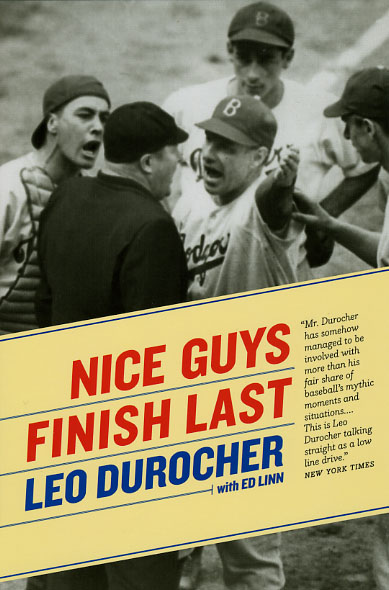Leo Durocher and the “Collapsing Cubs”

Leo “the Lip” Durocher began his five-decade career inauspiciously, riding the bench for the powerhouse 1928 Yankees, hitting so poorly that Babe Ruth nicknamed him “the All-American Out.” But soon Durocher—who would become infamous for his cantankerousness, fighting moxie, and will to win—hit his stride taking the 1934 World Series with the “Gashouse Gang” Cardinals, turning the Brooklyn Dodgers around as player-manager five years later, and managing the New York Giants to their 1951 pennant win. But as Joe Distelheim notes in a recent review of Durocher’s autobiography, Nice Guys Finish Last, not even “the Lip” could “swagger and tough talk” his way around The Curse of the Billy Goat. Distelheim writes:
Odds are good, dear reader, that I already was following the Cubs when your mother was born, so you’ll understand that I took particular interest in the Chicago part of the chronology. Durocher had an easy act to follow; he took over in 1966 after a particularly fallow period even for the Cubs of that era. They were coming off an eighth-place finish and a failed five-year experiment with a “college of coaches” running things instead of a manager.
In the book, Durocher doesn’t omit the oft-told story: He declared that the Cubs weren’t an eighth-place team. Right. His first year, they finished 10th.
This was not a team without talent. It included future Hall of Famers Ernie Banks, Billy Williams and Fergie Jenkins (plus Durocher himself) and Hall shoulda-been Ron Santo. The trouble with the Cubs, though, Durocher writes, was all those home run hitters. In his view, Banks was too old, too hobbled, too admired by sports writers. Santo was too slow, too mouthy, too prone to fail in the clutch.
Banks, however, was and is regarded in Chicago as St. Francis is in Assisi. Santo was and is similarly adored. Durocher got no place with his bosses when he suggested trading them. So, he cooked up a deal for Williams, proposing to send him to the Orioles for a flock of Curt Blefarys. That didn’t fly, either.
Even though burdened with these mediocrities, by Year Two of Durocher the Cubs were in the first division, primed for the 1969 pennant race that would become legendary for both the Collapsing Cubs and the Miracle Mets.
An entertaining account of the career of a man who presided over some of the most exciting wins, and disappointing losses of the 20th century, Leo Durocher’s Nice Guys Finish Last brings the personalities and play-by-play of baseball’s greatest era to vivid life.
For more read Distelheim’s review in The Hard Ball Times or see another recent review of the book published in last week’s Beachwood Reporter.
“Imagine getting behind-the-scenes reports from someone who absolutely doesn’t care about stepping on toes. That’s Nice Guys Finish Last.” —Rick Kaempfer, Beachwood Reporter
Also read an excerpt from the book.